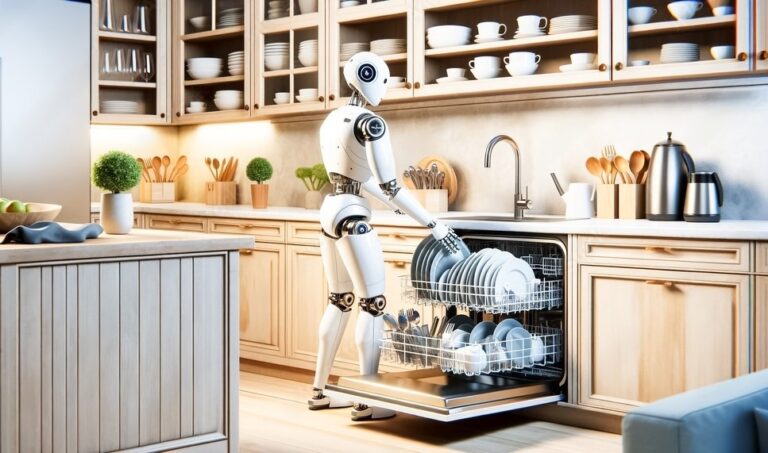Robotics Revolution: Innovations in Autonomous Systems, Human-Robot Interaction, and Industry 4.0

The evolution of robotics technology has been nothing short of revolutionary, with recent advancements pushing the boundaries of what was once thought possible. From autonomous vehicles navigating our roads to collaborative robots working side by side with humans in manufacturing plants, the realm of robotics has expanded exponentially. In this discussion, we’ll explore the latest trends and innovations in robotics technology, focusing on autonomous systems, human-robot interaction, and their integration into Industry 4.0.
Autonomous Systems:
Autonomous systems, particularly autonomous vehicles, have been at the forefront of robotics innovation. Companies like Tesla, Waymo, and Uber have been leading the charge in developing self-driving cars capable of navigating complex environments with minimal human intervention. These vehicles utilize a combination of sensors, cameras, Lidar, and advanced algorithms to perceive their surroundings and make real-time decisions.
Advancements in autonomous systems extend beyond just automobiles. Drones, for example, have become increasingly autonomous, with applications ranging from aerial photography to package delivery. Agricultural drones equipped with multispectral cameras can monitor crop health and optimize farming practices, while delivery drones promise to revolutionize logistics by offering swift and efficient parcel delivery services.
Collaborative Robots (Cobots):
Collaborative robots, or cobots, represent another significant advancement in robotics technology. Unlike traditional industrial robots, cobots are designed to work alongside humans, augmenting human capabilities rather than replacing them. These robots are equipped with sensors and safety features that allow them to operate safely in close proximity to humans without the need for safety cages.
Cobots find applications in various industries, from manufacturing and logistics to healthcare and hospitality. In manufacturing, cobots assist human workers with repetitive or physically demanding tasks, increasing productivity and reducing the risk of workplace injuries. In healthcare, cobots aid surgeons during procedures, assist with patient rehabilitation, and even provide companionship to the elderly in care facilities.
Applications in Manufacturing, Healthcare, and Beyond
The integration of robotics technology into various sectors has led to a myriad of applications that were once considered science fiction. In manufacturing, robots are transforming production lines, enabling mass customization, and reshoring manufacturing operations. Advanced robotic arms equipped with machine vision and force sensing capabilities can handle delicate tasks such as assembly and inspection with precision and efficiency.
In healthcare, robots are revolutionizing patient care by assisting medical professionals with surgeries, rehabilitation, and telemedicine. Surgical robots, such as the da Vinci Surgical System, enable minimally invasive procedures with unparalleled precision, reducing patient recovery times and post-operative complications. Robotic exoskeletons help individuals with mobility impairments regain independence and improve their quality of life.
Beyond manufacturing and healthcare, robotics technology is making inroads into areas such as logistics, construction, agriculture, and even entertainment. Autonomous mobile robots are streamlining warehouse operations by autonomously picking, packing, and transporting goods. In construction, robots equipped with 3D printing technology can fabricate complex structures with speed and precision, revolutionizing the construction industry.
Industry 4.0 and the Robotics Revolution
The fourth industrial revolution, often referred to as Industry 4.0, is characterized by the integration of digital technologies into industrial processes, leading to increased automation, connectivity, and data exchange. Robotics plays a central role in Industry 4.0, as robots are equipped with sensors, actuators, and connectivity features that enable them to communicate and collaborate with other machines and systems in real-time.
In the context of Industry 4.0, robotics technology is driving the transformation of traditional manufacturing processes into smart, interconnected systems known as smart factories. These factories leverage robotics, artificial intelligence, internet of things (IoT), and big data analytics to optimize production, minimize downtime, and respond quickly to changes in demand.
The convergence of robotics and artificial intelligence (AI) represents the latest revolution in the field of robotics technology. AI-powered robots are capable of learning from experience, adapting to new environments, and making intelligent decisions autonomously. Machine learning algorithms enable robots to recognize patterns, predict outcomes, and optimize their behavior based on feedback from their environment.
Exploring the Multifaceted Advances of Robotic Technologies
The advances in robotics technology are multifaceted, encompassing hardware innovations, software developments, and breakthroughs in artificial intelligence. On the hardware front, robotics engineers are developing lightweight materials, compact actuators, and energy-efficient power sources that enable robots to operate for extended periods without human intervention.
Software advancements are equally crucial, as they enable robots to perceive their surroundings, plan optimal paths, and execute tasks with precision. Machine learning algorithms, neural networks, and deep learning techniques are revolutionizing robotic perception and decision-making, allowing robots to interpret complex sensory data and make context-aware decisions in real-time.
Artificial intelligence is at the forefront of the robotics revolution, enabling robots to exhibit human-like cognitive abilities such as perception, reasoning, and learning. AI-powered robots are capable of understanding natural language, recognizing emotions, and interacting with humans in a more intuitive and natural manner.
Advanced Robotics Technology
Advanced robotics technology encompasses a wide range of capabilities and applications, from humanoid robots that mimic human behavior to swarm robotics that enable coordinated actions among large groups of robots. Humanoid robots, such as Boston Dynamics’ Atlas and Honda’s ASIMO, are designed to perform tasks in human environments, such as assisting with household chores or providing customer service in retail settings.
Swarm robotics, on the other hand, focuses on the coordination and collaboration of multiple robots to achieve common goals. Swarm robots can work together to explore unknown environments, perform search and rescue missions, or assemble complex structures. The decentralized nature of swarm robotics makes it robust and adaptable to dynamic environments.
Advancements in the Fields of Robotics
Advancements in robotics are not limited to specific industries or applications but span a wide range of fields, including aerospace, defense, agriculture, and entertainment. In aerospace, robots are used for tasks such as spacecraft assembly, maintenance, and exploration of extraterrestrial environments. NASA’s Mars rovers, for example, have revolutionized our understanding of the Martian surface and its potential for human exploration.
In defense, robots are utilized for tasks such as bomb disposal, reconnaissance, and surveillance in hazardous environments. Unmanned aerial vehicles (UAVs) and unmanned ground vehicles (UGVs) play a crucial role in military operations, providing real-time intelligence and support to troops in the field.
In agriculture, robots are revolutionizing farming practices by automating tasks such as planting, weeding, and harvesting. Autonomous tractors equipped with GPS and precision farming technologies can optimize crop yields while minimizing environmental impact. Robotic drones equipped with sensors and cameras can monitor crop health and detect signs of disease or pest infestation.
In entertainment, robots are captivating audiences with their performances in theme parks, theaters, and exhibitions. From animatronic characters to robotic dinosaurs, entertainment robots entertain and inspire people of all ages, showcasing the creative potential of robotics technology.
In conclusion, the robotics revolution represents a transformative wave of innovation that has permeated various facets of modern society. Advancements in autonomous systems, collaborative robots, and their integration into Industry 4.0 have revolutionized industries ranging from manufacturing to healthcare and beyond.
Autonomous systems, particularly self-driving vehicles and drones, have showcased the potential for robotics to redefine transportation and logistics. These technologies promise safer, more efficient modes of transportation and delivery, with implications for urban planning, environmental sustainability, and economic efficiency.
Collaborative robots, or cobots, epitomize the synergy between humans and machines, enhancing productivity and safety in manufacturing, healthcare, and other sectors. Their ability to work alongside humans, augmenting rather than replacing human labor, opens up new possibilities for automation and efficiency while ensuring a human-centric approach to technological advancement.
The integration of robotics into Industry 4.0 has ushered in a new era of smart manufacturing, characterized by interconnected systems, real-time data analytics, and autonomous decision-making. Smart factories leverage robotics, artificial intelligence, and IoT to optimize production processes, reduce downtime, and adapt to changing market demands swiftly.
The convergence of robotics and artificial intelligence represents the latest frontier in robotics technology, enabling robots to exhibit human-like cognitive abilities such as perception, reasoning, and learning. This fusion of technologies holds the potential to revolutionize fields such as healthcare, education, and customer service, enhancing human-robot interaction and unlocking new possibilities for automation and autonomy.
As we look to the future, the applications and advances in robotics technology will continue to shape our world, driving innovation, improving efficiency, and enhancing the quality of life for people around the globe. However, with these advancements come ethical considerations, including concerns about job displacement, privacy, and safety, which must be addressed through responsible development and regulation.
